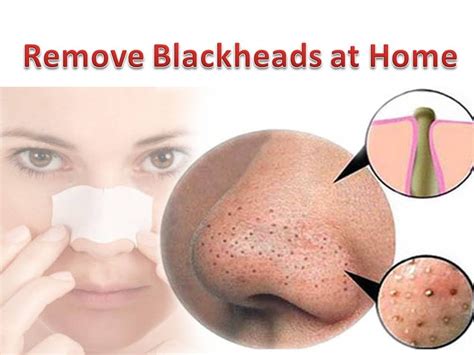How To Remove Blackheads On Nose: A Complete Guide
Blackheads. Those pesky little dark spots that seem to magically appear on your nose, ruining your otherwise flawless complexion. They're frustrating, but thankfully, there are ways to tackle them effectively. This comprehensive guide will walk you through various methods to remove blackheads on your nose, from simple at-home remedies to professional treatments. Remember, consistency is key! No single method works overnight, so patience is crucial.
Understanding Blackheads
Before we delve into removal methods, let's understand what blackheads actually are. Blackheads are a type of acne caused by clogged pores. Sebum (oil), dead skin cells, and dirt combine to block the pore. The dark color isn't dirt, but rather oxidized melanin (the pigment that gives your skin its color) exposed to air at the surface of the clogged pore.
At-Home Blackhead Removal Methods
Several effective at-home methods can help minimize and remove blackheads. Always remember to cleanse your face thoroughly before and after any treatment.
1. Steam Your Face:
- Benefits: Steaming opens up your pores, making it easier to extract blackheads. This method is gentle and can be done regularly.
- How-to: Fill a bowl with hot (but not boiling) water. Drape a towel over your head and lean over the bowl for 5-10 minutes, allowing the steam to soften your skin.
2. Blackhead Removal Strips:
- Benefits: These readily available strips adhere to the nose, pulling out blackheads as they are removed. They offer a quick, visible result.
- Considerations: Overuse can irritate the skin. Follow the instructions carefully and avoid pulling too hard.
3. Exfoliation:
- Benefits: Regular exfoliation removes dead skin cells, preventing pores from becoming clogged.
- How-to: Use a gentle scrub or chemical exfoliant (like salicylic acid or glycolic acid) 1-2 times per week. Avoid harsh scrubbing, which can irritate the skin and potentially worsen blackheads.
4. Clay Masks:
- Benefits: Clay masks help absorb excess oil and draw out impurities from pores.
- How-to: Apply a clay mask specifically designed for acne-prone skin to your nose and leave it on for the recommended time (usually 10-15 minutes). Rinse thoroughly with lukewarm water.
5. DIY Blackhead Mask:
- Ingredients: Baking soda and water (create a paste), honey, or oatmeal and yogurt. These ingredients possess natural exfoliating and cleansing properties. Many online tutorials offer detailed instructions.
Professional Blackhead Removal Treatments
If at-home methods aren't sufficient, consider professional treatments:
1. Chemical Peels:
- Benefits: Chemical peels use acids to exfoliate the skin, unclogging pores and reducing blackheads. Different strengths cater to varying skin types.
- Considerations: Consult a dermatologist for a personalized recommendation.
2. Microdermabrasion:
- Benefits: This procedure uses a specialized device to gently exfoliate the skin, removing dead skin cells and improving skin texture.
- Considerations: It's a more aggressive treatment than at-home methods, so discuss suitability with a professional.
3. Extraction by a Dermatologist or Esthetician:
- Benefits: A trained professional can safely and effectively extract blackheads using specialized tools.
- Considerations: This method carries a risk of scarring if not done correctly.
Preventing Blackheads
Preventing blackheads is just as important as removing them. Here are some tips:
- Wash your face twice daily: Use a gentle cleanser suited to your skin type.
- Keep your hands off your face: Touching your face transfers dirt and oil to your pores.
- Moisturize regularly: Even oily skin needs moisturizer; choose a non-comedogenic option (won't clog pores).
- Use oil-free makeup: Opt for makeup labeled "non-comedogenic" or "oil-free."
- Maintain a healthy diet: A balanced diet can contribute to healthier skin.
By combining effective removal methods with consistent preventative measures, you can significantly reduce the appearance of blackheads and enjoy clearer, healthier skin. Remember to always be gentle with your skin and consult a dermatologist if you experience persistent or severe acne.
